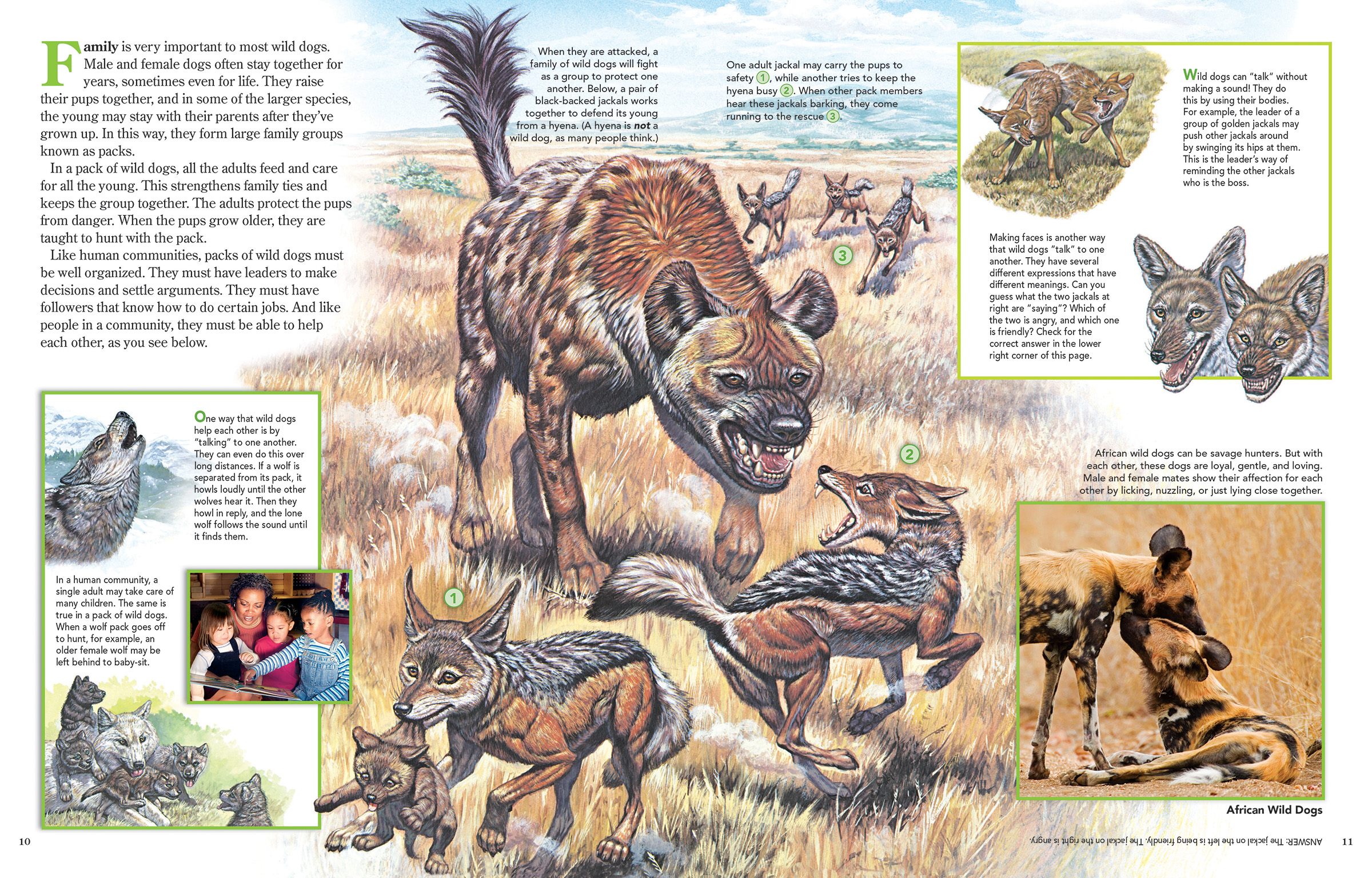
Wild Dog Families
ByFamily is very important to most wild dogs. Male and female dogs often stay together for years, sometimes even for life. They raise their pups together, and in some of the larger species, the young may stay with their parents after they’ve grown up. In this way, they form large family groups known as packs.
In a pack of wild dogs, all the adults feed and care for all the young. This strengthens family ties and keeps the group together. The adults protect the pups from danger. When the pups grow older, they are taught to hunt with the pack.
Like human communities, packs of wild dogs must be well organized. They must have leaders to make decisions and settle arguments. They must have followers that know how to do certain jobs. And like people in a community, they must be able to help each other, as you see below.
One way that wild dogs help each other is by “talking” to one another. They can even do this over long distances. If a wolf is separated from its pack, it howls loudly until the other wolves hear it. Then they howl in reply, and the lone wolf follows the sound until it finds them.
In a human community, a single adult may take care of many children. The same is true in a pack of wild dogs. When a wolf pack goes off to hunt, for example, an older female wolf may be left behind to baby-sit.
When they are attacked, a family of wild dogs will fight as a group to protect one another. Below, a pair of black-backed jackals works together to defend its young from a hyena. (A hyena is not a wild dog, as many people think.)
One adult jackal may carry the pups to safety 1, while another tries to keep the hyena busy 2. When other pack members hear these jackals barking, they come running to the rescue 3.
Wild dogs can “talk” without making a sound! They do this by using their bodies. For example, the leader of a group of golden jackals may push other jackals around by swinging its hips at them. This is the leader’s way of reminding the other jackals who is the boss.
Making faces is another way that wild dogs “talk” to one another. They have several different expressions that have different meanings. Can you guess what the two jackals at right are “saying”? Which of the two is angry, and which one is friendly? Check for the correct answer in the lower right corner of this page.
African wild dogs can be savage hunters. But with each other, these dogs are loyal, gentle, and loving. Male and female mates show their affection for each other by licking, nuzzling, or just lying close together.
African Wild Dogs
ANSWER: The jackal on the left is being friendly. The jackal on the right is angry.

